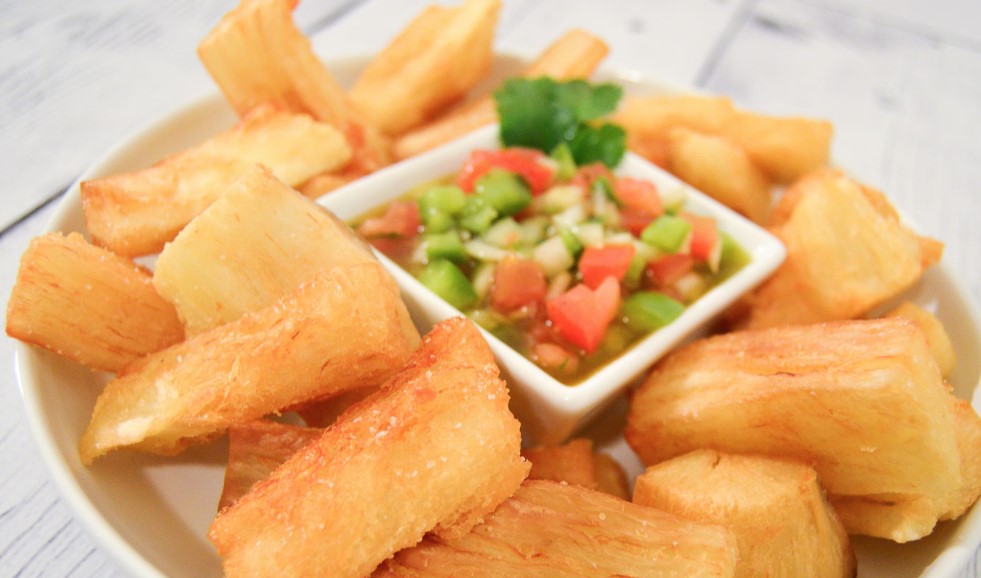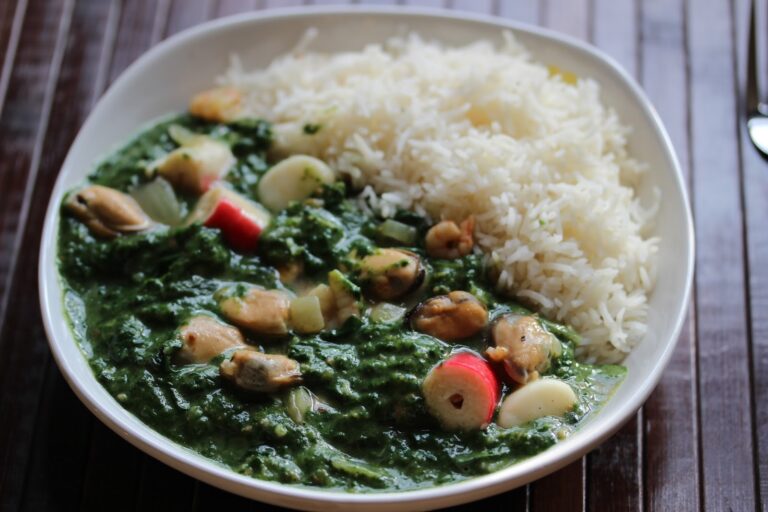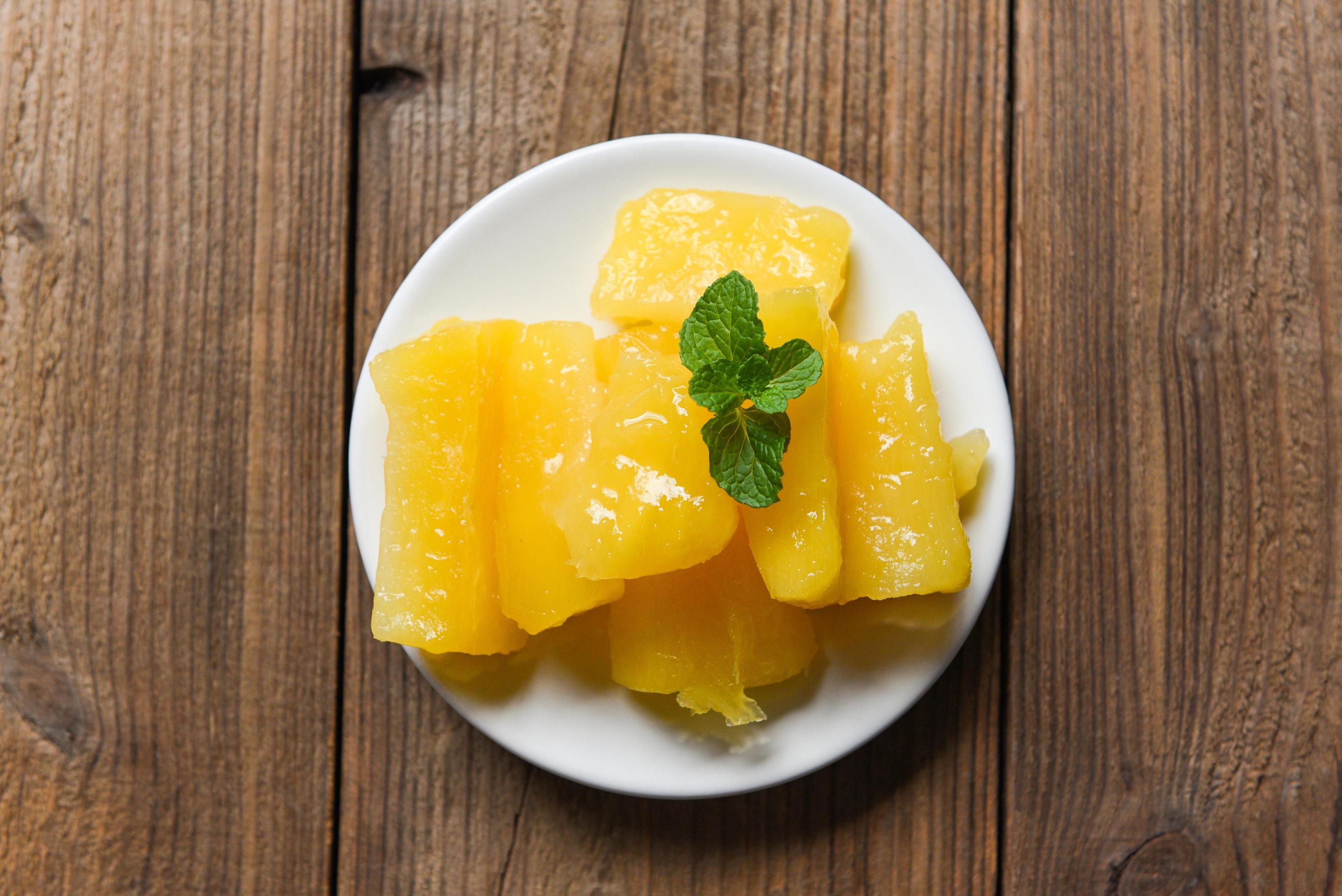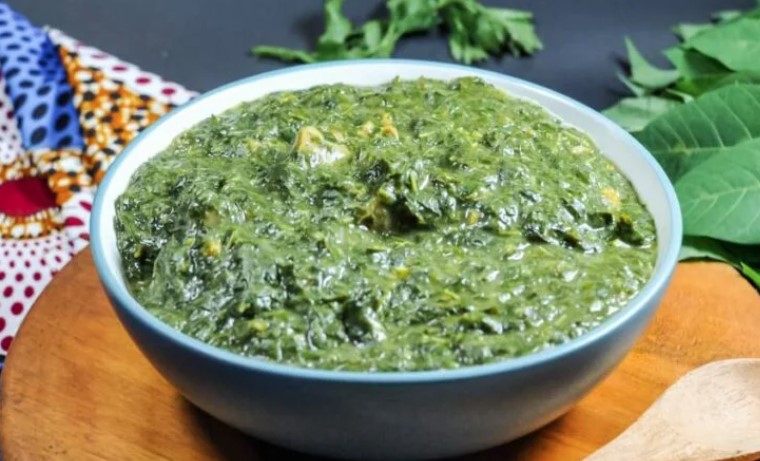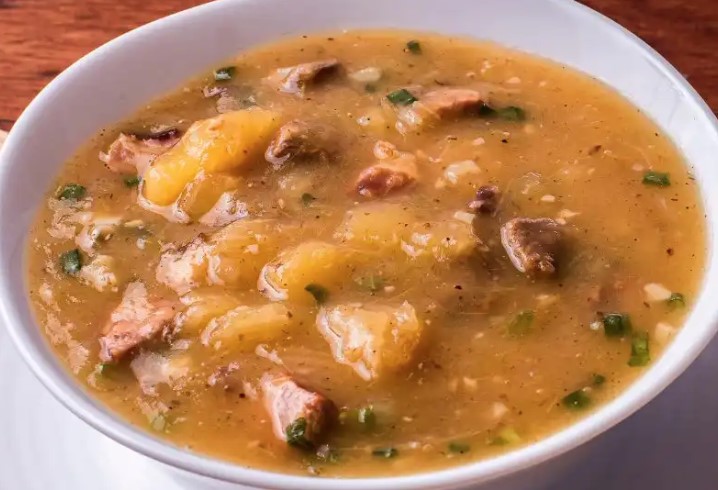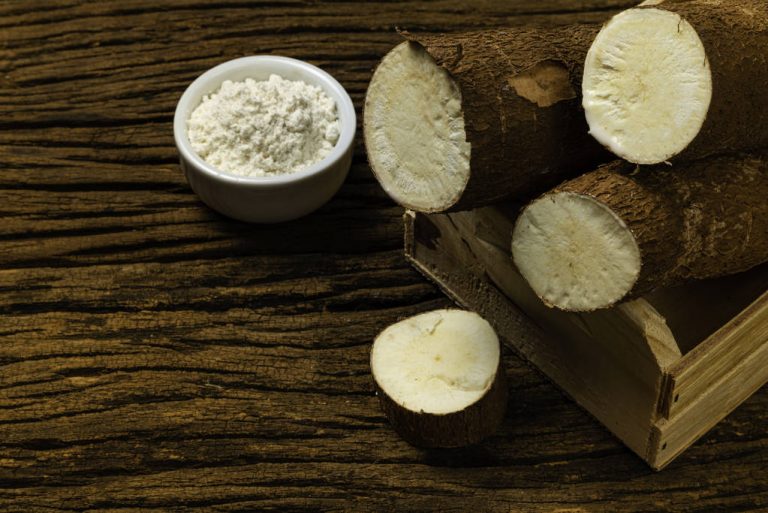Cassava flour is a good alternative to conventional wheat flour. It is gluten-free and grain-free and yet can be used almost like wheat flour. You can find out more about cassava root flour here.
Cassava flour is being hailed as the new star among alternative flours. It is a flour that is gluten-free, grain-free and rich in fiber.
Cassava flour is made from the starchy tubers of cassava. This is a plant species that belongs to the Spurge family. Manioc originally comes from South America and the natives are said to have fed on the plant. There are now cassava growing areas in many tropical and subtropical regions around the world. Even today, cassava is one of the staple foods of millions of people in South America and parts of Asia and Africa.
However, the cassava roots are poisonous when raw because they contain hydrocyanic acid. However, they can be processed in such a way that the hydrocyanic acid boils down and the tubers become edible. For this reason, cassava tubers are often fermented, boiled or ground into flour and washed.

Cassava Flour: Nutritional Values
Manioc flour is an interesting flour alternative for people who (have to) eat a grain-free or gluten-free diet. It has a high starch content, a mild taste and a fine texture. Thus, cassava flour mimics the consistency and properties of conventional flour very well. Unlike other gluten-free flour alternatives (such as buckwheat or quinoa flour), cassava flour can often be used as a one-to-one substitute for conventional flour containing gluten, such as wheat flour. Other gluten-free flours usually require additional ingredients to make a working dough.
Energy: 371 kcal
Carbohydrates: 88.6 g
Protein: 0g
Fat: 0g
Calcium: 57 mg
Potassium: 303 mg
What is striking about the nutritional values is the high proportion of carbohydrates. In comparison, wheat flour has about 70 grams of carbohydrates per 100 grams of flour. Cassava flour is therefore a good source of energy. However, it has no protein and only a few essential amino acids. After all, wheat flour has 11 grams of protein. Cassava flour also lacks micronutrients such as vitamins. Therefore, where cassava is a staple food, nutritional deficiencies can occur. For this reason, scientists have been trying for some time to breed cassava varieties whose tubers contain more nutrients. On the positive side: cassava flour contains a lot of calcium and potassium.
However, there is nothing wrong with including cassava flour in a balanced diet from time to time. Especially in a gluten-free diet, cassava flour provides a lot of variety.
Use cassava flour: bread, pancakes and more
To make cassava flour the traditional way, the tubers are peeled, grated, and then soaked. The mass is then pressed out, washed and roasted in an oven. What remains is the cassava flour.
Depending on the region, the cassava flour is processed differently. It often turns into a bread-like cake or farofa (Brazilian side dish). A Brazilian drink is also based on cassava flour. In some African areas, the flour is also used for fufu or foufou, a kind of dumpling dough.
Tip: Incidentally, finely ground cassava flour is often also called fufu or foufou in European trade. You can find it in Asian or Latin American supermarkets.
If you have never used cassava flour, you can approach it and replace part of the conventional flour with cassava flour in existing recipes. You can use cassava flour to make breads, rolls, wraps, pancakes, cakes and cookies. Depending on the dough and recipe, you may need a little less liquid in your baked goods. Cassava flour is also suitable for binding sauces or making breading.
Recipe with cassava flour: Fufu from West Africa
Fufu (also foufou) is widespread in West Africa and popular as a main ingredient or side dish in many dishes. Fufu refers to a type of solid porridge or dough that is formed into small dumplings and served with a sauce, soup or stew.
Ingredients for fufu (dumplings made from cassava flour):
cassava flour
water
Cassava flour binds a lot of water. Therefore, the rule of thumb is that you should always use a little more water than you use cassava flour. If you take 100 grams of cassava flour, add about 120 milliliters of water.
How to prepare fufu:
Boil the water.
Pour the boiling water over the flour in a saucepan.
Heat the mixture, stirring constantly, bring to the boil and then continue to simmer for about 10 to 12 minutes. Keep stirring the porridge.
Then take the pot off the stove to let the mixture cool down a bit.
Then form small dumplings with your hands. You can serve these with various vegetable dishes, or use them traditionally as an ingredient in soups, stews or sauce dishes.
Tip: The balls are often so sticky that they are difficult to chew. That’s why they are usually dipped into the sauce or soup and swallowed whole.
Recipe with cassava flour: Farofa from Brazil
Another classic cassava flour recipe is the Brazilian farofa. This is a popular side dish, for which the cassava flour is sautéed in a pan with butter, onions and herbs until golden brown. Eggs are often added as well.
We recommend that you use organic ingredients that come from the region whenever possible. In this way you support an agriculture that does without many synthetic pesticides and in which animal welfare is better guaranteed. In addition, with regional products you avoid long transport routes that cause high CO2 emissions.
You need these ingredients for four servings:
200 g cassava flour
3 tbsp butter (or margarine if vegan)
2 spring onions
1 bunch coriander or parsley
5 sprigs of fresh mint
1 teaspoon zest from a lemon
Salt
How to prepare the farofa:
Wash the herbs and chop them up.
Cut the spring onions into rings.
Heat the butter or margarine in a pan and sweat the onion in it.
Add the cassava flour and toast until golden brown in color.
Stir in the herbs, lemon zest and spring onions.
Tip: If you want to eat eggs, add them to the pan along with the cassava flour. The farofa goes well with rice or bean dishes.
Life cycle assessment: cassava flour is so sustainable
The life cycle assessment of cassava flour:
On the one hand, cassava grows very well even in long periods of drought and therefore does not need to be watered heavily. This is particularly beneficial in regions where water is often scarce.
On the other hand, buying cassava flour in Germany is not very ecological. Because the flour is imported and therefore travels long distances. Transport causes so many climate-damaging emissions.
Therefore, you should carefully consider to what extent you want to integrate cassava flour into your diet. Conscious handling of cassava flour is important in any case. Also, you can try mixing cassava flour with other locally sourced gluten-free flours. This includes, for example, buckwheat flour.

